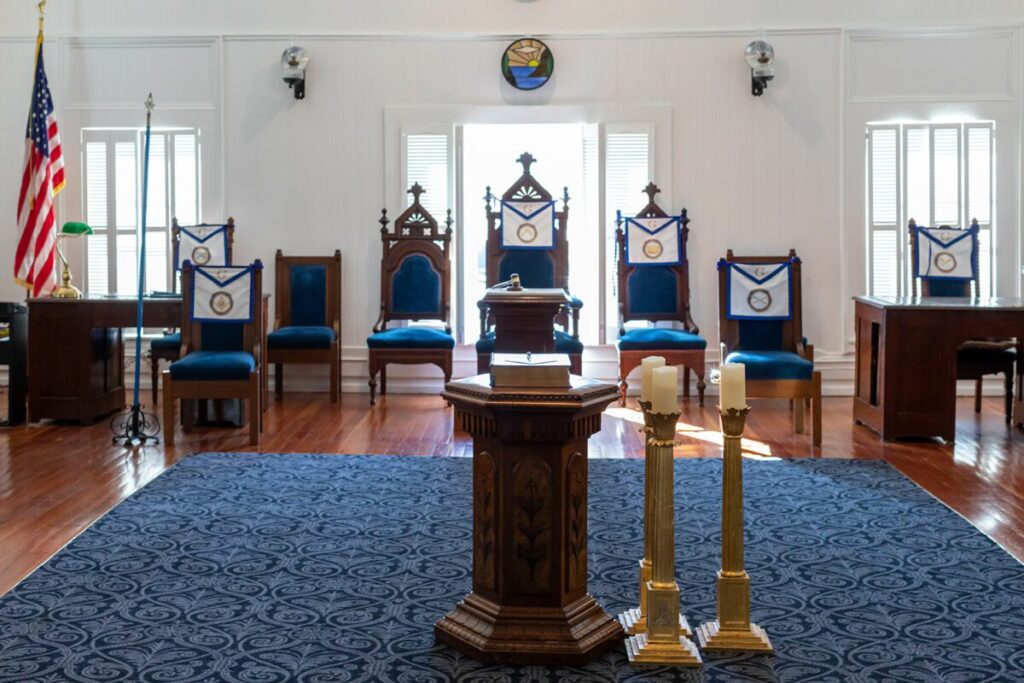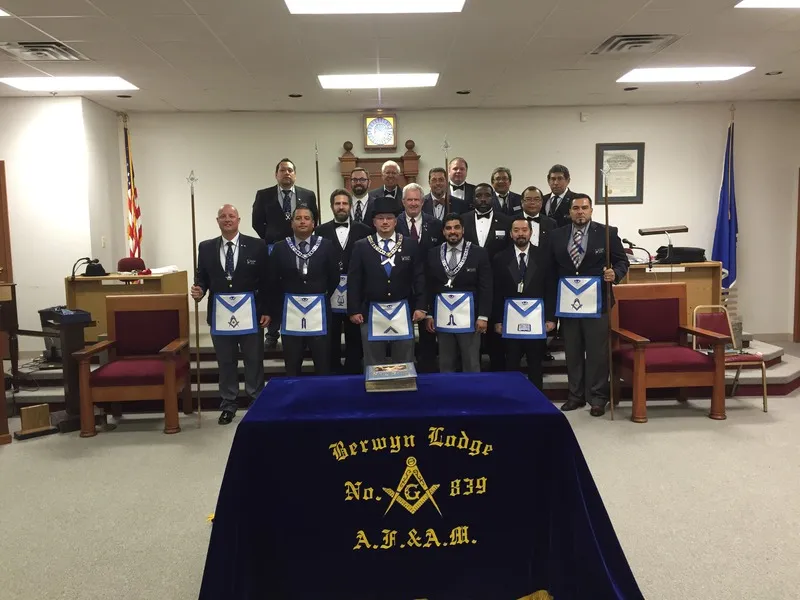INSIDE LODGE ROOM
Masonic Lodges, Explained
A Masonic “lodge” refers to both the local chapter of Masons and the room where they meet. Multiple Masonic groups, or lodges, may share a lodge room and meet on different days of the week. Use our lodge locator to find a lodge close to you.
In Texas, there are over 330 local lodges organized under the Grand Lodge of Texas, as well as many more organized through the Prince Hall Grand Lodge of Texas, the Women’s Grand Lodge of Texas, or one of several other organizations. Each has slightly different customs and traditions.
Masons gather in lodges for two purposes: to hold monthly “stated meetings” where they discuss the business of the lodge, which operates as a non-profit entity, and to help candidates progress through the Freemasonry degrees. These are private events that are only open to Masons. To learn more about Freemasonry’s principles, download this digital booklet or go to the explainer site linked

Freemasons’ Hall at the texas Masonic Memorial Temple
The lodge room at the Texas Masonic Memorial Temple is located inside the newly constructed Freemasons’ Hall, which opened in 2019. In addition to the lodge room, Freemasons’ Hall features a bar and dining area, as well as a library and lounge (pictured here).
The lodge room’s design is based on “sacred geometry” and incorporates numerous Masonic symbols. For example, behind the lodge master’s chair on the eastern wall, a sculpture of the dawn wall features a gradient of rough to polished marble—a reference to the Mason’s lifelong work of “perfecting their ashlar.” Click the link below to learn more about the lodge room’s symbolism.

The Square and Compass
The Masonic square and compass is probably the most widely used symbol in Masonry, representing Freemasons and Masonic lodges all over the world. Ancient stonemasons used these tools to make 90-degree angles and check the accuracy of their work. In “speculative” Masonry (as modern Freemasonry is known), the square represents morality. The compass symbolizes the relationship between the individual and society.
The letter “G,” which is not always depicted within the square and compass, represents geometry—the foundation upon which stonemasonry is built.
Freemasonry contains a wealth of symbolism. Find out more about it at the link below.

inside the lodge
Masonic lodge rooms can range from large, elaborate halls to small, spartan meeting areas. Some are not even inside. They do, however, share some similarities.

The Altar and Lights of Freemasonry
Each lodge room contains an altar, a holy book (typically, but not always, a bible), a square, and a compass. These are known as the three “greater“ lights of Freemasonry. Next to the altar are three candles, known as “lesser lights” in Freemasonry, which represent the sun, moon, and lodge master. They are intended to convey consistency and regularity. In many lodge rooms, candles are depicted as light bulbs, often blue.

The Officer’s Chairs
Each lodge is led by elected officers, such as the lodge master and senior and junior wardens. (Other positions include lodge secretary, treasurer, and tiler—a role that combines guard, front–desk, and protocol officer.)
The lodge’s officers are seated at specially designated stations throughout the lodge room. The master of the lodge is always seated on the east side of the room. During ritual ceremonies, members who are not officers sit in rows along the northern and southern flanks, known as sideliners.

The Mosaic Floor
Among the other “adornments“ of the lodge room is the mosaic floor, also known as pavement in Freemasonry. The alternating black and white tiles represent good and evil, and the tesselated border that frequently surrounds the checkerboard is thought to represent God’s blessings.
